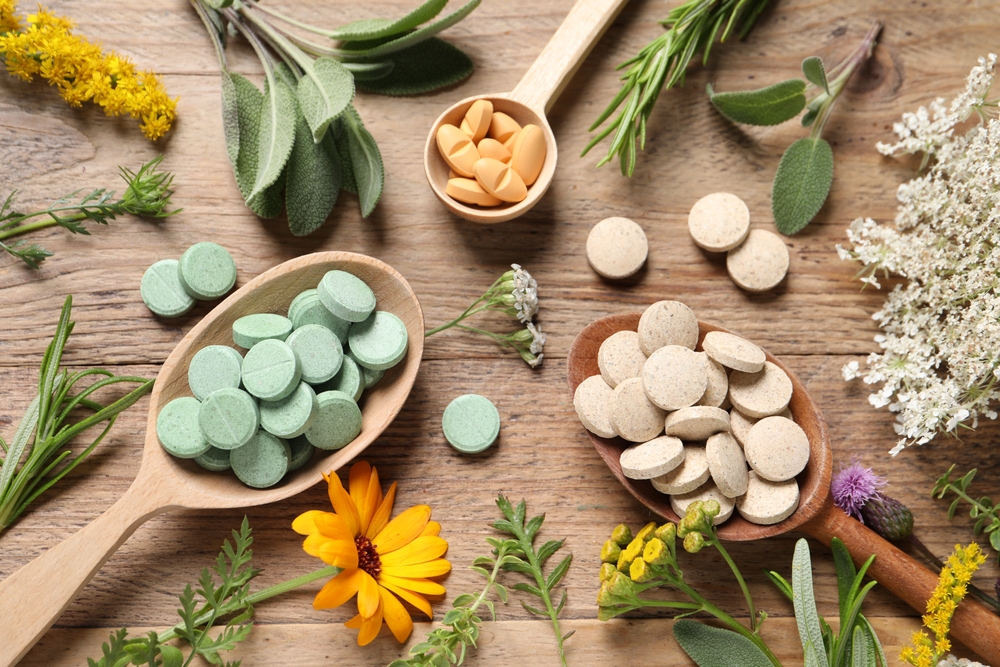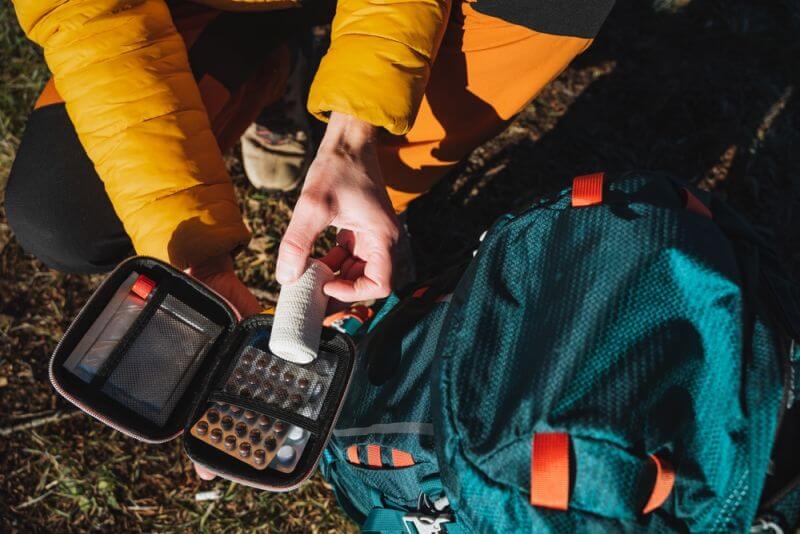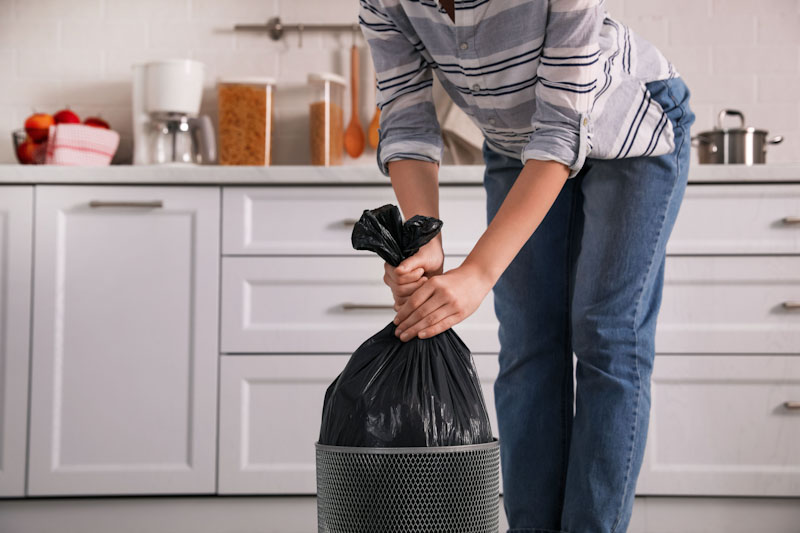You grow your own food, you use coconut oil for moisturizer, and you clean your house with vinegar and maybe lemon oil.
Why? You probably do it for a number of reasons. You want to be self-sufficient, you don’t want to eat or clean with toxic chemicals, and you want to save some money and preserve the environment.
Then why on Earth are you still brushing your teeth with a product that’s packed with so many questionable ingredients? Why not make your own toothpaste at home?
As preppers, another valuable reason to know how to make your own toothpaste is that it’s going to be a valuable trading commodity if SHTF and causes a major disruption in commerce for an extended period of time. Most people don’t have more than one backup tube of toothpaste, and it’s one of those items that most folks won’t think to include in a bug-out bag, so the demand will be there.
I personally have learned how to make several different hygiene products including soap and perfume, but toothpaste is by far one of the easiest. It doesn’t require any cooking and the ingredients are common and easy to come by; chances are good that you have the basics in your house right now.
In addition to self-sufficiency, making your own toothpaste is a good idea because commercial toothpaste has several ingredients that may not be so good for you.
4 Reasons to Avoid Commercial Toothpaste
Fluoride
Nearly all commercial toothpastes contain fluoride, a mineral that the government started putting in our water in the 60’s. Fluoride is purported to be good for the enamel on your teeth and is currently a topic of hot debate in the medical community because of links to cancer. Though there are studies that support both sides, I choose to avoid it.
Glycerin
Again, this is an ingredient that is purported to be benign but there is data to support that it may leave a film on your teeth that can prevent your teeth from absorbing the minerals they need to stay healthy. Since removing that type of film is kind of the point of brushing your teeth, I’ll pass.
Sodium Lauryl Sulfate
This is a surfactant, which basically means that it’s a soap that’s added to toothpaste to clean your teeth and make the toothpaste foam. Though it’s been deemed safe by the FDA, it has been shown to aggravate existing canker sores and may actually cause them, though the research about that is unclear. Either way, it’s something that I just don’t want in my toothpaste, and you won’t find it in any of these recipes.
Artificial Colors and Flavors
In its natural state, toothpaste isn’t gleaming white or sparkly blue and it doesn’t taste sweet. Commercial toothpastes add artificial colors and flavors to their product to get these results. Since many artificial colors and sweeteners have been linked to cancer, many people have cut them out of their diets.
Sure, you don’t eat toothpaste, but you typically swallow at least a bit of it, and small kids swallow even more. None of these recipes have artificial colors or flavors. You can add a few drops of your favorite essential oil to add flavor, along with a few drops of liquid stevia to add sweetness if you’d like.
What You Need for Making Toothpaste
Finally, if SHTF, commercial toothpaste may not be an option and you’ll certainly want to be self-sufficient enough to be able to maintain dental hygiene. The most basic of these recipes requires household ingredients that you’ll likely have around anyway, as you’ll be using them for purposes other than just brushing your teeth.
As preppers, we all love multi-purpose items, and these fall distinctly into that category.
Baking Soda
Most of these recipes contain baking soda because that’s the traditional base for toothpastes. It’s long been known for its ability to destroy odors (thus why we use it in the refrigerator and in laundry) and it’s abrasive enough to scrub the plaque and stains off of your teeth.
It’s also alkaline so it neutralizes acids in your mouth that can cause bad breath, tooth decay, and gum disease. Many worry that this abrasive quality may also wear down the enamel on your teeth. The abrasive rating of baking soda on the Relative Dentin Abrasively scale is less than that of commercial toothpaste.
Sea Salt
Many people add sea salt to their toothpaste because it has trace minerals and it’s also an abrasive that will help scrub stains off of your teeth. Salt may also have some antibacterial properties that will help eliminate the bacteria that cause bad breath.
Bentonite Clay
This natural clay acts as a natural mild abrasive and also delivers trace minerals that can help re-mineralize your teeth. When using bentonite clay, don’t use metal containers or utensils because, when moistened, the clay builds an electrical charge and opens up like a sponge to absorb toxins. Metal disrupts this process.
There is some concern that bentonite contains trace amounts of lead, which is true, but according to the research that I found, the lead is already strongly bonded to the other minerals in the clay, and thus won’t stay in your body. Instead, it will be swept out of your body along with other toxins and waste.
Coconut Oil
Coconut oil is being used more and more as a base for homemade toothpaste because of its antibacterial qualities. It comes either refined or unrefined. The unrefined tastes like coconut and the refined is flavorless.
Natural Sweeteners
We’re programmed to think that toothpaste is supposed to be sweet so many of us, especially kids, like to add some sweetener to the homemade versions. There are two good options and both come in liquid forms.
- Stevia is derived from a plant and has been shown in some studies to inhibit the growth of bacteria that cause tooth decay and gum disease.
- Xylitol is a sugar alcohol that helps prevent tooth decays and also helps re-mineralize enamel.
Since bacteria don’t feed on xylitol, it doesn’t cause tooth decay. If you’re going to use this, be sure to keep it away from pets because it can be toxic to them.
Essential oils
There are many different essential oils that you can use in your toothpaste to kill germs that can cause cavities and bad breath. Some of them taste great and some of them, not so much. However, some of the ones that taste the worst (tea tree oil, neem oil, eucalyptus oil) are some of the most powerful. It’s a tradeoff: taste for effectiveness. Still, there are good-tasting oils that are also extremely effective for day-to-day purposes.
Clove oil, in particular, has been used for centuries as a cure for toothaches by the old timers and is actually approved by the Dental Association for that purpose. Here are some essential oils and the benefits that push them to the top of the list. Remember that essential oils are extremely concentrated and too much of a good thing isn’t always a better thing. Oils often need to be diluted before use so educate yourself on the oil before you use it.
This list is just a guide to get you started; how much of each oil to use is outside the scope of this article. Most of the recipes below recommend adding a few drops of the essential oil to the toothpaste but some of them, such as clove oil, can be applied straight to a sore tooth. Others can be irritating if used at full strength.
- Tea Tree, Neem, Eucalyptus, Ginger, Myrrh, Lemon, Orange, Clove, Cinnamon, Lemon, Rosemary, Oregano Oils – antibacterial, antiviral, antifungal, anti-inflammatory, analgesic
- Peppermint – antibacterial, anti-inflammatory, analgesic and great tasting.
5 Ways to Make Toothpaste
You can use these in combination if you’d like in order to find a taste that you like. Peppermint and cinnamon are, of course, two favorites because those are standard flavors for commercial toothpaste. To use these toothpastes, just dip or apply a pea-sized amount to your toothbrush.
Recipe 1 – Basic Baking Soda Toothpaste
- 1/4 cup baking soda
- 1/8 cup sea salt (optional)
- 10 drops peppermint or cinnamon oil (optional)
- 1/4 cup filtered water
Combine baking soda and sea salt. Add essential oil then add enough water to reach a paste consistency. Store in an airtight container.
Recipe 2 – Coconut Oil/Bentonite Clay Toothpaste
This homemade toothpaste looks a bit funky but it has great ingredients that offer a diverse array of benefits for your mouth and teeth.
- 1/4 cup coconut oil
- 1/4 cup bentonite clay
- 3 tbsp. filtered water
- 1 tsp sea salt
- 10-20 drops peppermint oil or oil of your choice
- 4 or 5 drops stevia or xylitol (optional)
Combine coconut oil, clay and salt. Add water until it reaches a paste consistency then stir in the oil and sweetener. Store in an airtight, non-metal container away from light.
Recipe 3 – Coconut Oil/Baking Soda Toothpaste
This version of homemade toothpaste is a bit less gritty than standard baking soda toothpaste. The coconut oil may take a bit of getting used to texturally but in the long run, it’s a good option.
- 1/4 cup coconut oil
- 1/4 cup baking soda
- 10-20 drops essential oils
- 5 drops stevia or xylitol (optional)
Stir baking soda into coconut oil, then add essential oil and sweetener.
Recipe 4 – Whitening and Re-mineralizing Toothpaste
One of the reasons why your teeth decay is because the minerals in your enamel are depleted. Dentists don’t typically think that replacing these minerals was possible but there is research that suggests that it is. A big part of the process is diet but toothpaste may play a role, too.
- 1/4 cup bentonite clay
- 2 tbsp. calcium powder
- 3 tbsp. coconut oil
- 1/2 tsp sea salt
- 1 tsp baking soda
- 10-20 drops essential oil
- 5 drops of sweetener, or to taste
- 1/2 cup filtered water
Stir together all of the dry ingredients. Add the coconut oil, the essential oil and the sweetener, then stir in just enough water to make the concoction a paste. Store in an airtight container. Opaque is best, or store it in a dark place to preserve the essential oil. If you’re worried about it being too salty, add the salt a bit at a time.
Recipe 5 – Squeezable Toothpaste
This is a cool combination because most of us think of toothpaste as coming in a tube. In addition, dipping into your toothpaste may be a bit messy, especially if you have kids. It can also be tough to travel with. This recipe makes a paste that goes right into BPA-free squeezable bottles and has the perfect consistency for squeezing out.
- 3 tbsp. bentonite clay
- 1/2 tsp sea salt
- 1 tsp baking soda
- 2 tbsp. coconut oil
- 20 drops essential oil
- 5 drops sweetener, or to taste
- 3 tbsp. filtered water
Combine dry ingredients then add coconut oil, essential oil and sweetener. Stir in water 1 tbsp. at a time – it should be exactly enough to make it into a squeezable paste but if it gets to that consistency before you use all the water, stop adding.
There you have it – some great recipes for DIY homemade toothpaste that are free of chemicals and are easy to make. If your coconut oil is particularly hard, you may want to melt it a bit before you mix your paste. Since the melting point of coconut oil is 76 degrees F, mine tends to have a texture similar to room-temperature butter but I know that some are much more solid than that.
For containers, just do a search for BPA-free squeeze tubes.
Now that you have some recipes to start with, go crazy, try them, and tell us about it in the comments section below! And click on the banner below to discover more ancient ways of living!
This article has been written by Theresa Crouse for Survivopedia.












































































All those items cost money & more than not you’ll never find that type of clay. all one needs to have clean teeth, healthy gums, & fresh breath is every day common old Baking soda. which by itself is less abrasive than most every day tooth paste.
Even though I live where bentonite occurs naturally, I am unlikely to use it in toothpaste. Just baking soda works for you, so stick with it! 🙂
Good article. I have been pursuing natural remedies for forty years. A couple of decades ago, I needed to save money, so I started making my own toothpaste. 1/2 cup baking soda, 1/3 cup coconut oil, and a few drops of peppermint essential oil. Lately, I have been adding a certain calcium powder which my body can absorb and alternate amongst peppermint, tea tree, and other essential oils as needed.